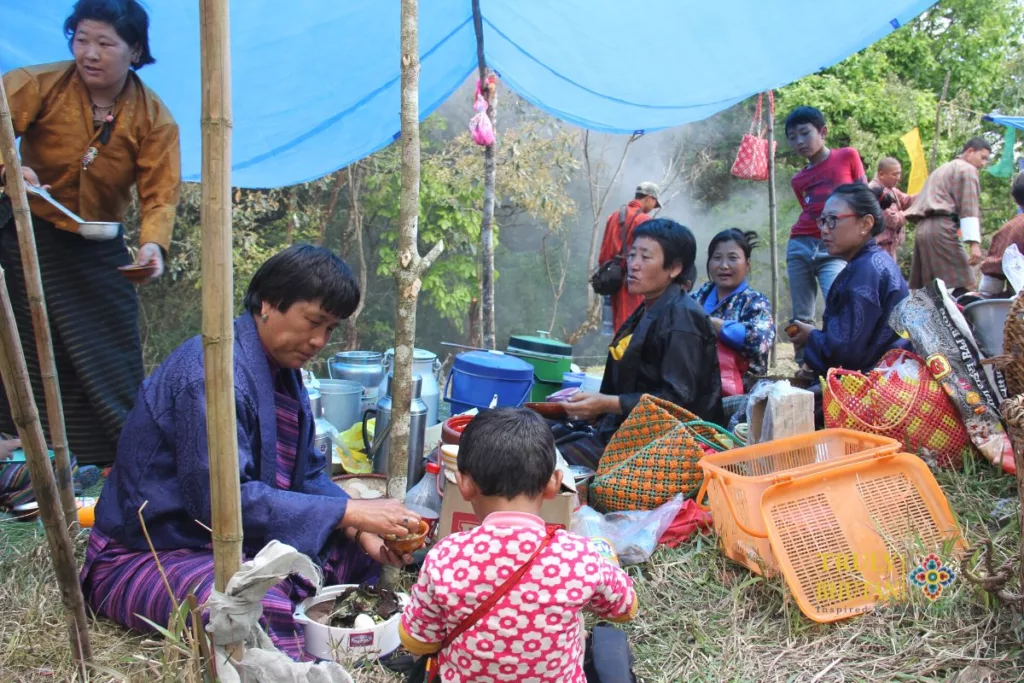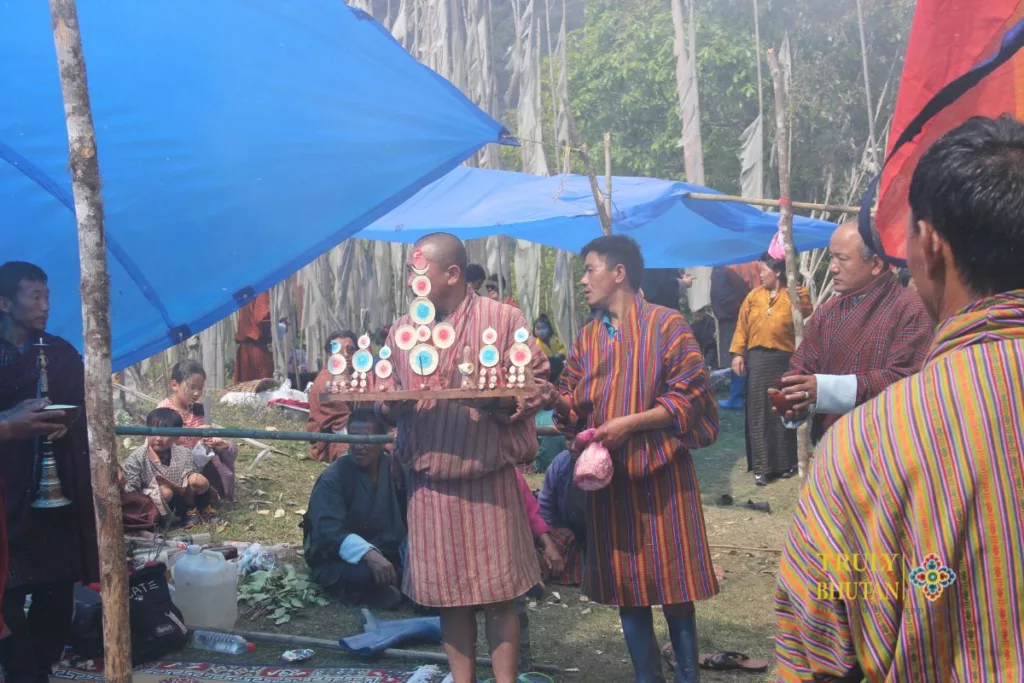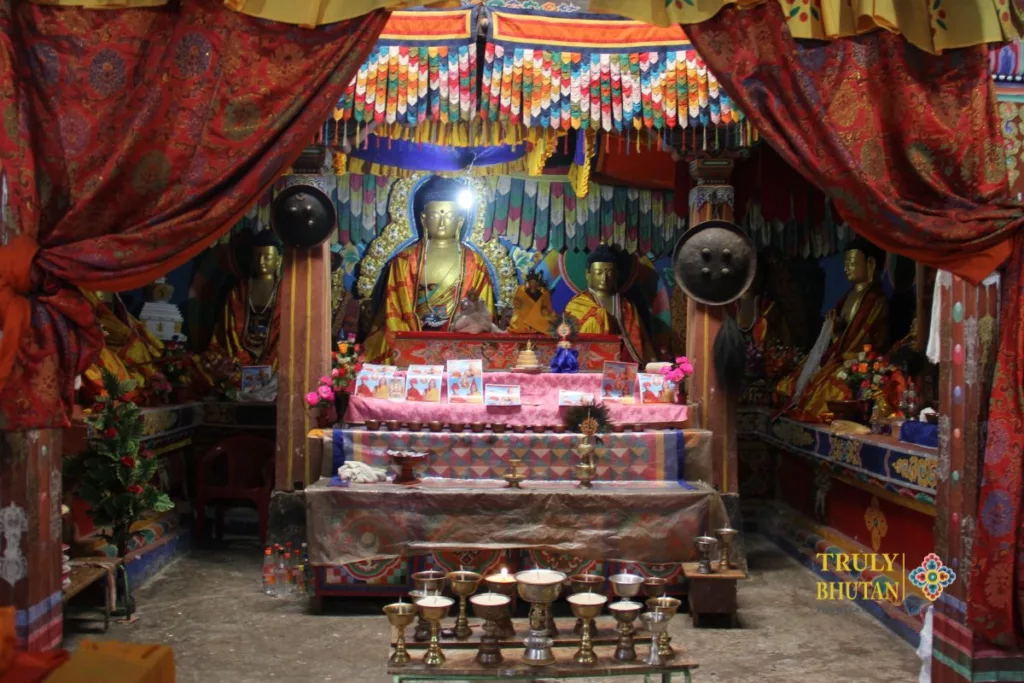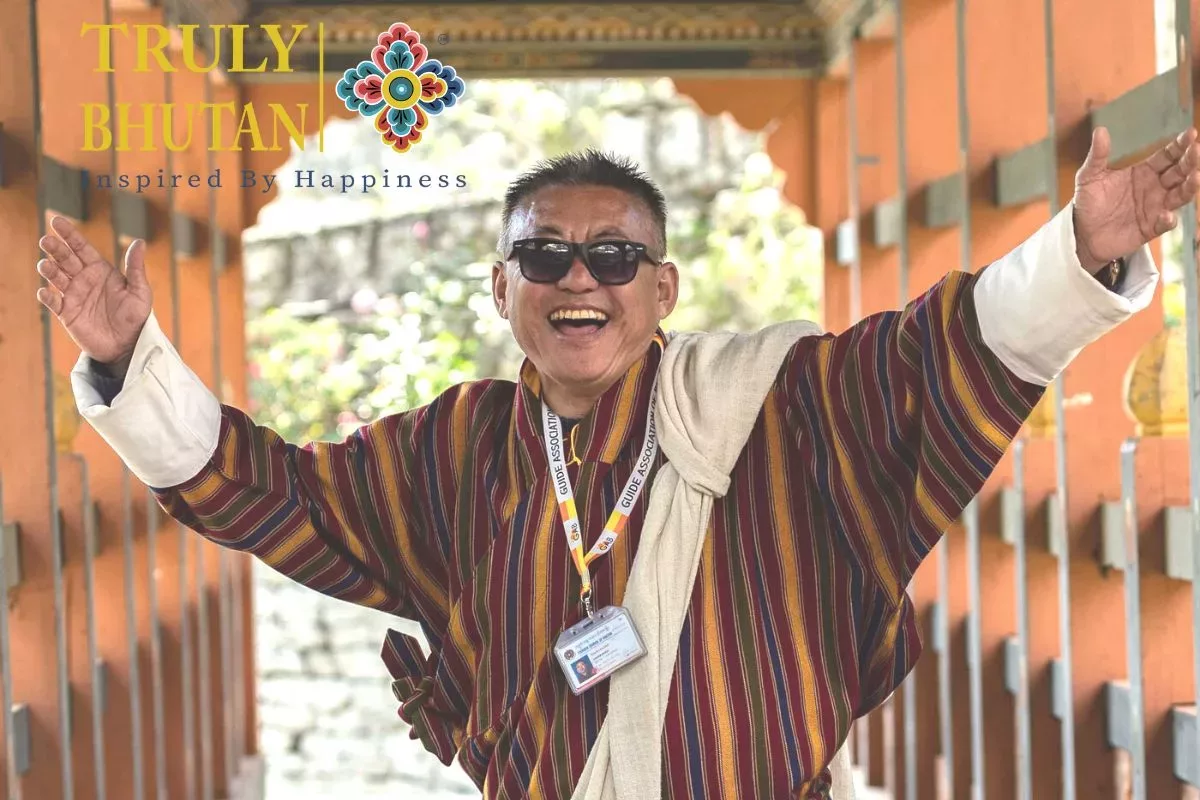Published on: September 8, 2022, by Garab Dorji
Naiten Dorji, 34 is next to the biggest oven he has, pouring mustard oil into the largest pot I have ever seen; his aluminum treasure resembling a vessel made of pure charcoal, which stands testament to the number of years it has faithfully served Naiten. The aroma of oil mixing with fodder and flour burning at more than 100 degrees Celsius fills the air. Nearby are three cows, turning to the brick-made oven regularly, and perhaps asking their master, “How long do we wait?”
A few meters inside the house Naiten’s spouse Sonam is offering water in seven small cups to the three idols on their small altar. Her lips are constantly on the move, suggesting that she is chanting prayers. She offers a butter lamp too, and then enters the kitchen. She has to prepare breakfast for three other additional heads, her three boys who are getting ready for school. The six are served breakfast at almost the same time. And as one of the cows breaks it’s fast, Naiten takes a small bucket and milks her – for the favorite drink of one of his boys, who gulps it in an instant.

Once the boys are done, Sonam begins preparing her sons for school. They have to walk for about 15 minutes and they are all geared for the day. After their boys are sent to school and the cows fed, the couple sits down for their breakfast.
Is this how every Bhutanese family begins their day?
Not! Health-conscious people in urban Bhutan begin their day jogging for a few kilometers every day. Those inclined to the Divine begin their day with prayers. In simple words, several factors dictate how one starts their day. Similarly, what one does in a day is also prescribed by social, economical, and other elements.
But what is so special about the way Naiten and his family begin the day? The specialty arises from the fact that the family embodies the majority of the Bhutanese populace. They represent thousands of Bhutanese from Sibsoo in the South to Shingkhar Lauri in the East; the highlanders of Laya and Lunana in the north and Merak and Sakteng in the East. They exemplify 57 percent of the Bhutanese who live in rural Bhutan. They are the ones who make agriculture the primary sector in Bhutan. And their specialty makes them the ordinary Bhutanese family, who depend on agriculture and cattle for their income; who have understood the value of education, and who brave the fury of nature and the wild to lead a decent life.
Radhi village is renowned for two things, its rice fields & the skill of its weavers
About 500 kilometers from where Naiten lives are Radhi, popularly called the Rice Bowl of Eastern Bhutan. Naiten’s sister has migrated to Radhi after marrying Tshering Dorji, from Radhi. Naiten takes out his two-decade-old Nokia phone and calls his sister. He enquires how she is and if her children have left for school. He tells her he is getting ready for paddy cultivation and that the rain Gods have been generous. Their conversations end and Sonam asks Naiten what her in-law is up to. He replies that they are getting ready for paddy cultivation, too.
Separated by 500 km, the two families appear to have begun the day in the same way. Both have completed their morning chores and sent their children to the temples of learning. And they are now preparing to get into the water-filled terraces for cultivating paddy.
Though not the same, at about the same time, residents living at 3800 masl, in the mesmerizing village of Laya would be doing something similar. They would not be engaged in paddy cultivation, but they would have got up early and fed their cattle; for it’s the cattle that feed them. They would also have sent their children to school and would be preparing to start the second errand of their day, which would be something related to farming. And the show would not be very different for residents living in the subtropical and tropical regions of the country.
Scene of an ordinary Bhutanese daily drama
Just like other Bhutanese like Naiten, the Layaps would begin milking their cows and slowly churn the protein to produce cheese and butter. In the South, it may not be cows or yaks; but the people would be engaged in milking their goats.
This part, the first scene of an ordinary Bhutanese daily drama is not something concocted today. It is part of a tradition that has been passed from generation, churned from the intrinsic relation that human beings have with nature and other beings. It is based on the law of interdependence; for instance between Naiten and his cows; the generosity of the rain gods and paddy cultivation and others. The bond is not very different from those that exist between humans. So much so that cattle, especially if the numbers are less, are given names and loved.

Solidarity is another strong aspect of Bhutanese culture, seen in both urban and rural areas and part and parcel of an ordinary day.
Expressed in different forms, it is symbolized in gatherings during joyous occasions like weddings, and promotions and in woeful times like the death of a person. It has other faces too, such as community farming during peak seasons, where people come together to work in a person’s field one day and then another the next day. The songs that farmers used to sing on such occasions are now part of history. However, at noon, a stranger passing through, who has little or no idea about such practices would wonder why people flock in the middle of a field for a picnic.
As mentioned above, people display unity during both happy and sad junctures; more so for the latter. While funeral rites and rituals depend on religion and region, there is no shortage of extra hands during such moments.
It would not be an overstatement to say that it is at the core of an ordinary Bhutanese’s heart and very much a part of the day of a Bhutanese
I have pictured Naiten and his friends in his paddy field. But there is more than just the paddy to be taken care of. Thus, while his wife stays back in the field Naiten rushes home; his cows must be fed, too. If he had no other tasks, he would take his three prized possessions for a walk and make them choose from the different kinds of fodder that grow wild. But, he does not have the luxury and the three cannot be set free on their own. They would jump into the fields of neighbors and have a luxurious meal of vegetables and other crops grown, leading to a squabble between the neighbors and their master.
There is another important assignment awaiting. The workers need to be thanked at the end of the day, with dinner and drinks. The latter is usually home-brewed local liquor called ara. Though alternatives such as beer and whisky have reached the small shops around, economics comes into the picture. It would be cheaper to offer what has been passed down generations, compared to those that have been produced in commercial distilleries.

The sun has shifted to the west. His kids arrive from school and the eldest immediately washes his hands. He then removes the water offered by his mother at the altar in the morning. He washes the cups too.
Ara & village life
It is time for dinner, though the time is just about 1800 hours. All the workers sit in a circle and before dinner sip Ara – the local drink. In the little time that they spend together, they talk about almost everything – the local government (LG) meeting next week; forthcoming local government elections; the futility of elected leaders; inflation; hunters from other villages coming for the prized bear bile….the list goes on. A hefty dinner is served after which they go home.
Naiten has had a full day. But he still has one more activity to complete. He has to get the mattresses for his three cows – dried oak and pine leaves. He starts his power tiller and heads off; returning after about half an hour with what his cows need.
Some may say that Naiten and his likes do not reflect or personify the ordinary Bhutanese.
Many have never fed and milked a cow. There are those doing business; others employed in the government and private sectors, though their numbers are less compared to the likes of Naiten. Though the nature of work done and those at hand differ, the essence is the same. Everyone takes one day at a time and all are working for survival. Everyone has their responsibilities and it begins early morning.
The difference though is that the lives of the likes of Naiten, ones I have taken the liberty to call ordinary Bhutanese, may be monotonous but stimulating; the excitement is drawn from the fact that their daily chores are interconnected, challenging, refreshing, and aligned with the very purpose of survival – to lead a decent life. In doing so, they have to be multi-skilled and physically and mentally strong. And it is these ordinary Bhutanese and the lives they lead, that have ensured from times immemorial that our granaries are full and our culture intact.


